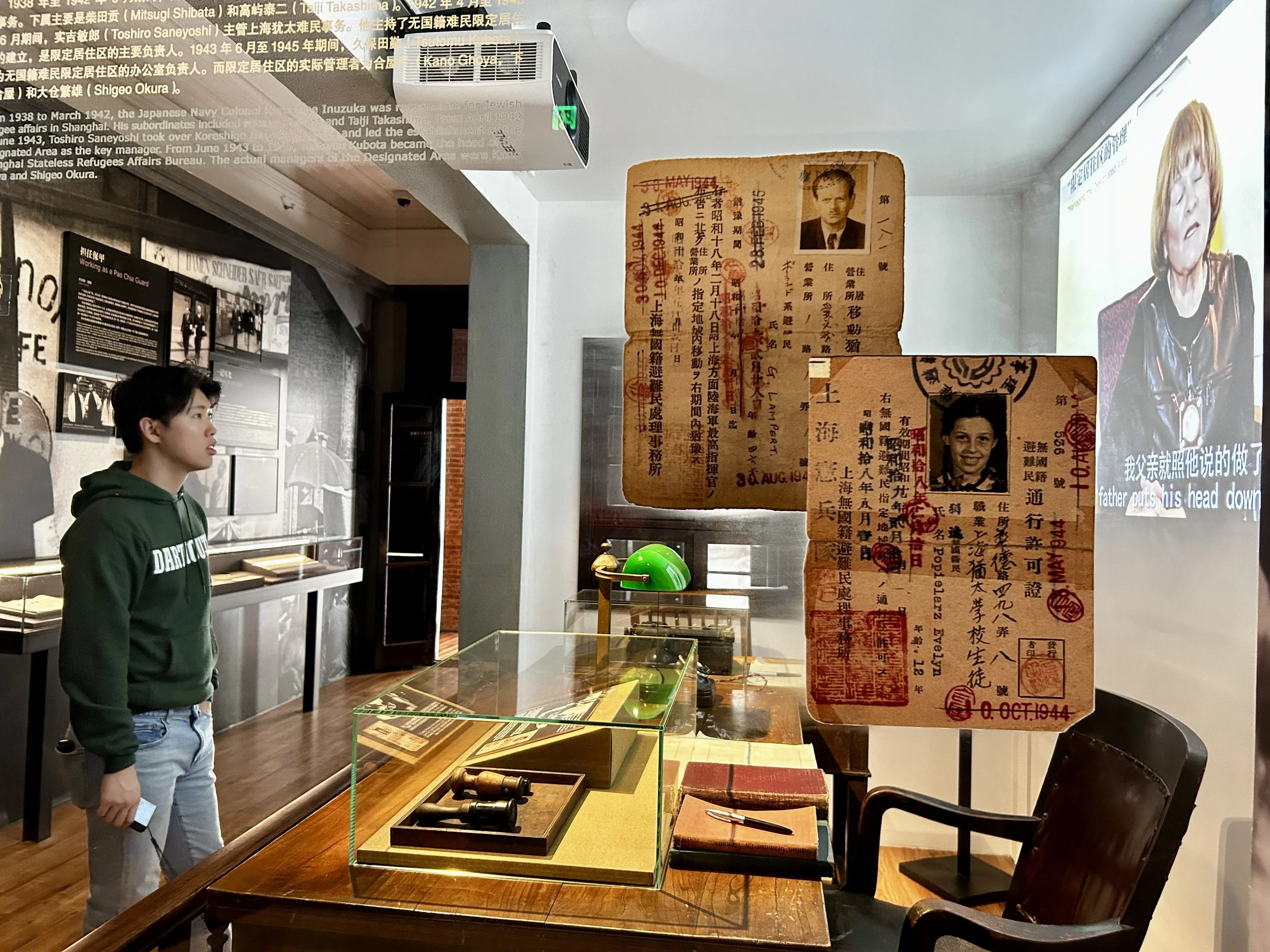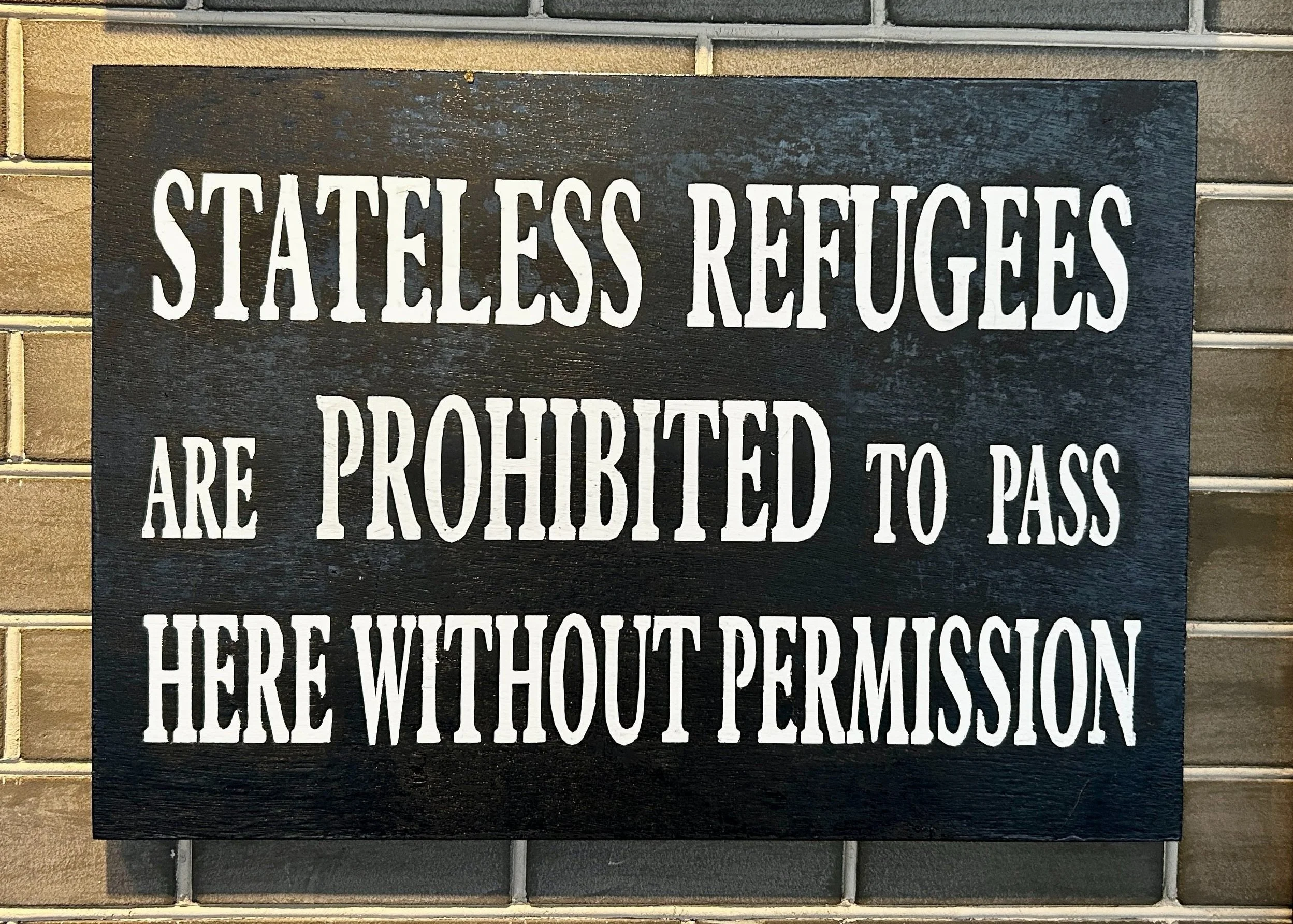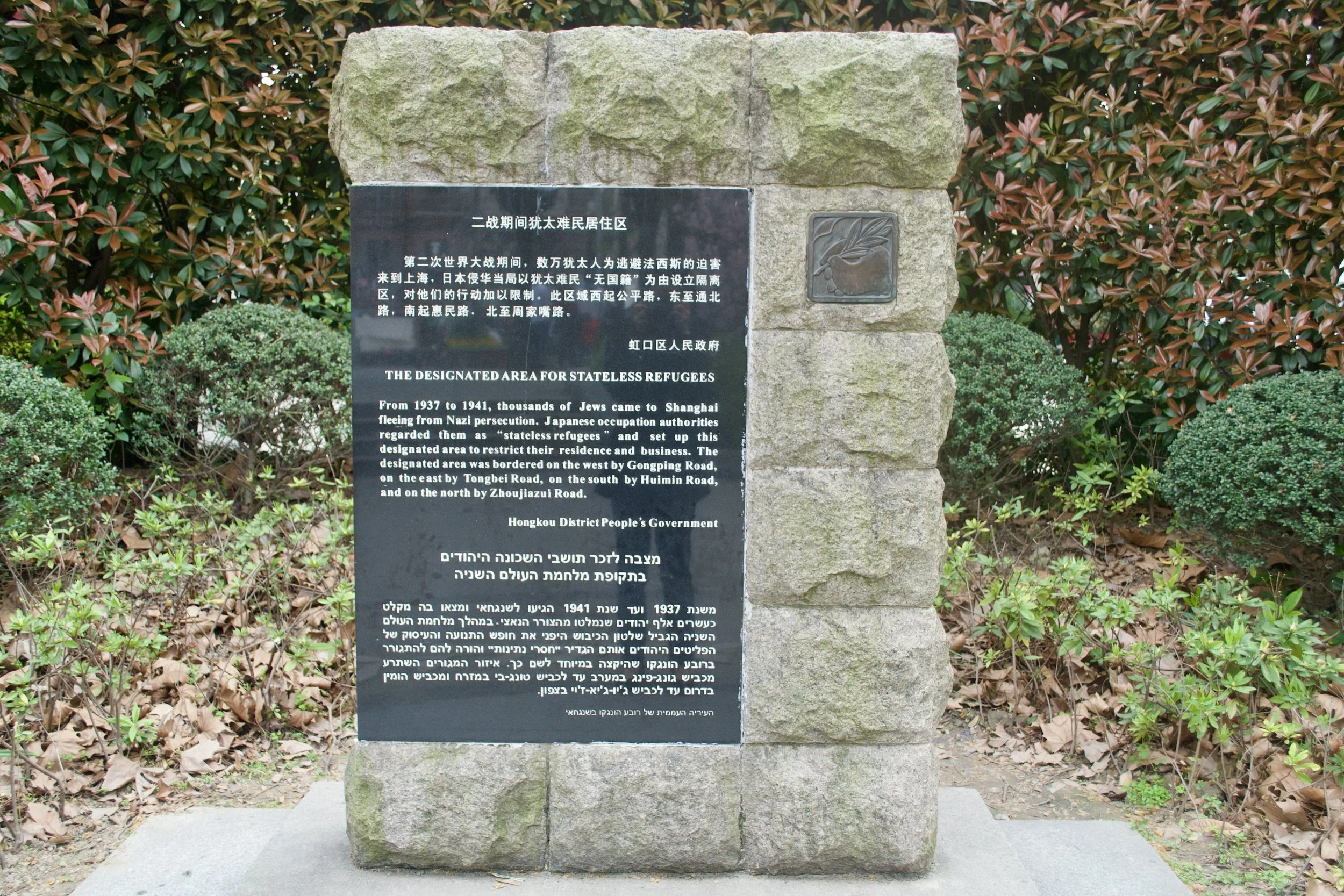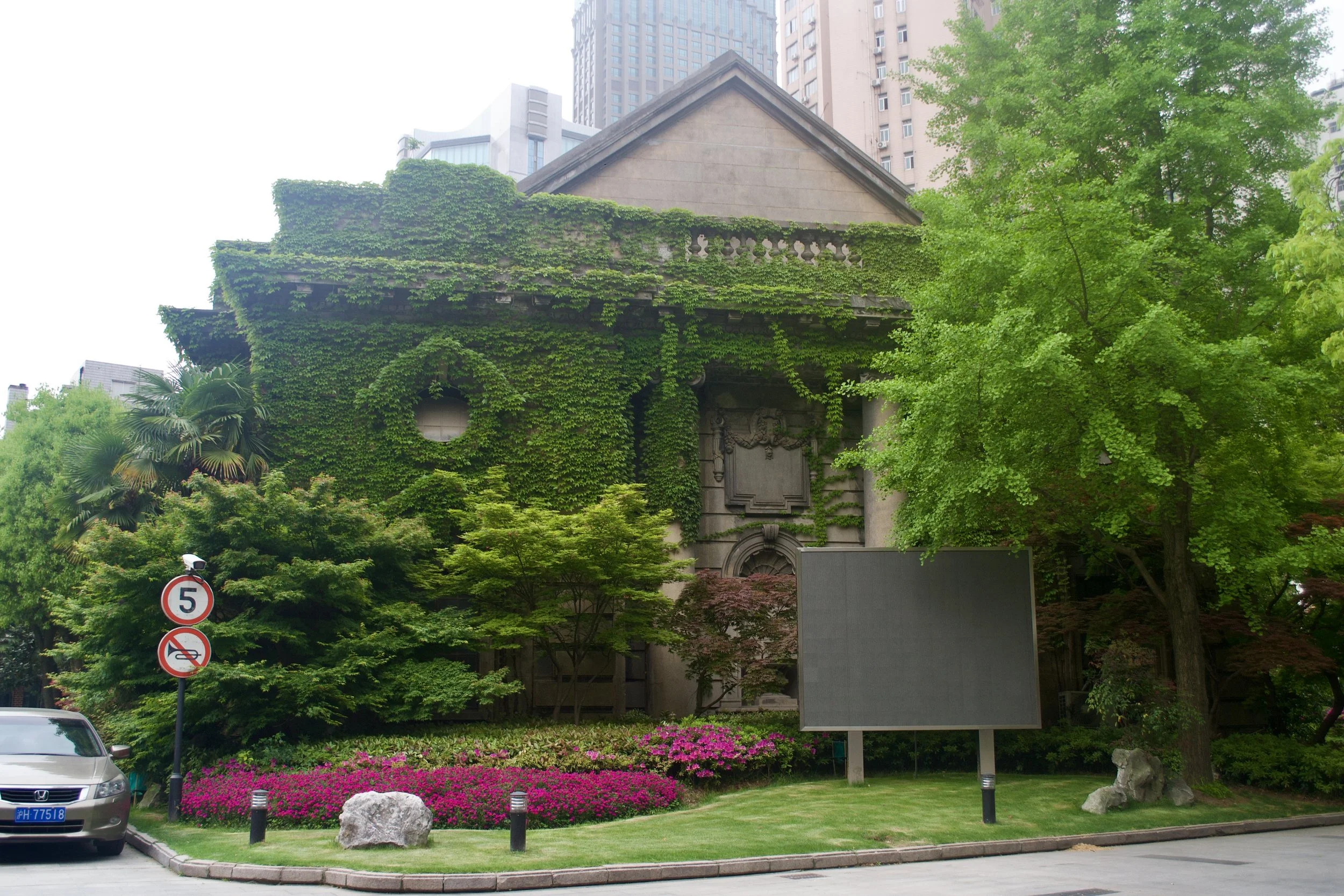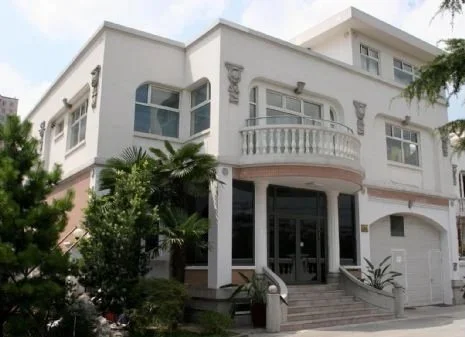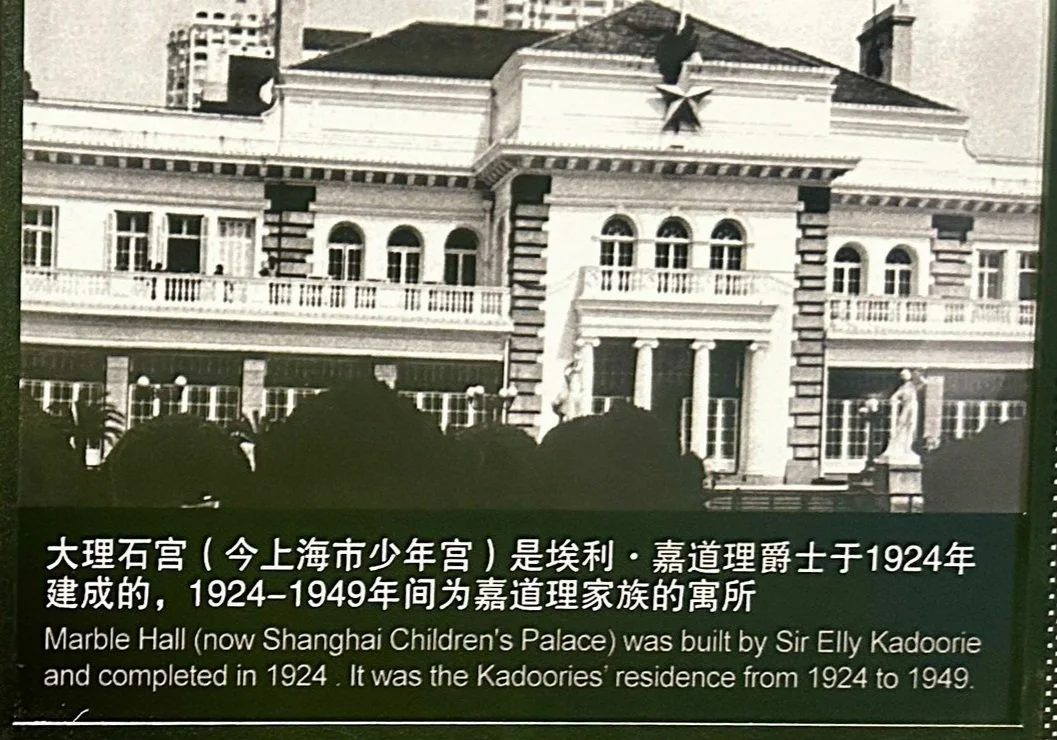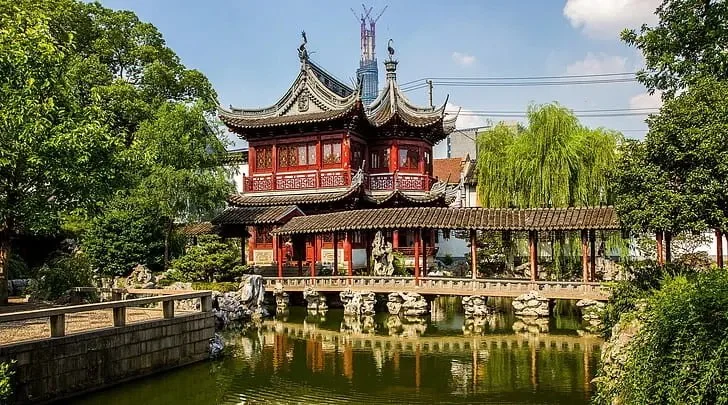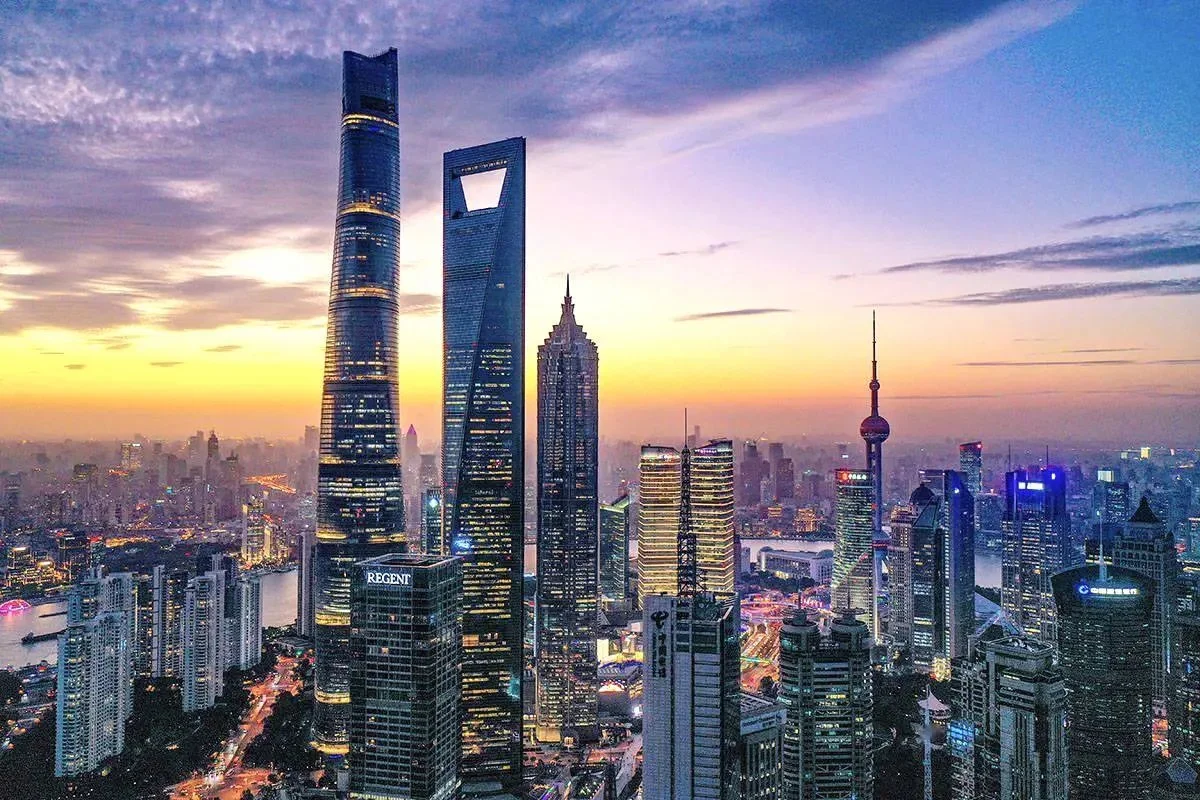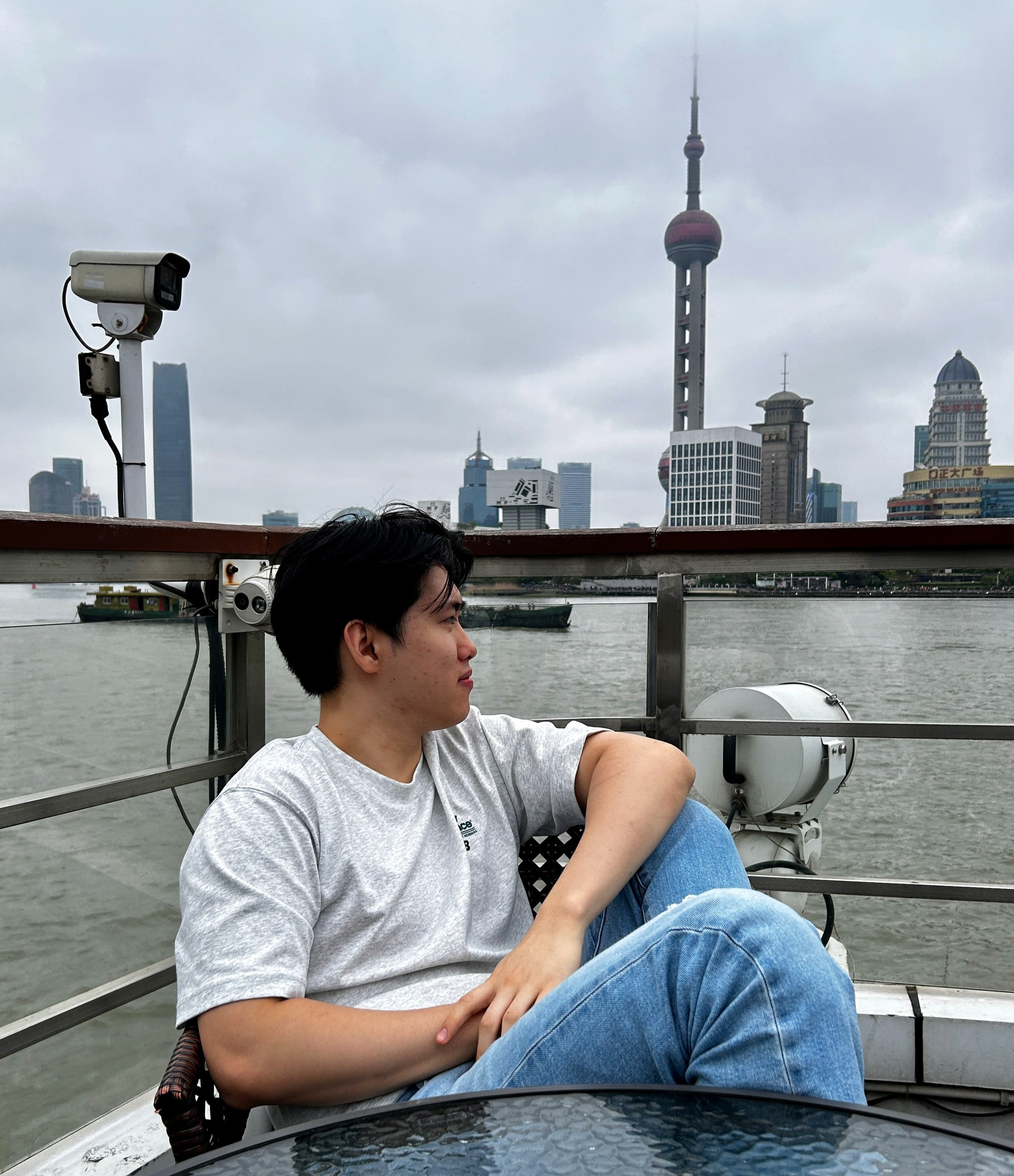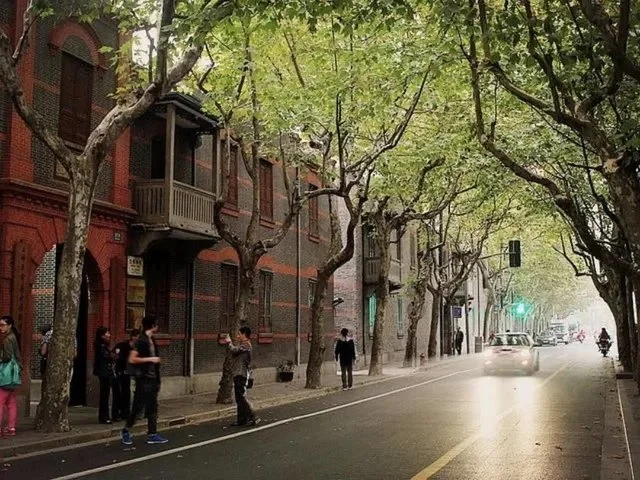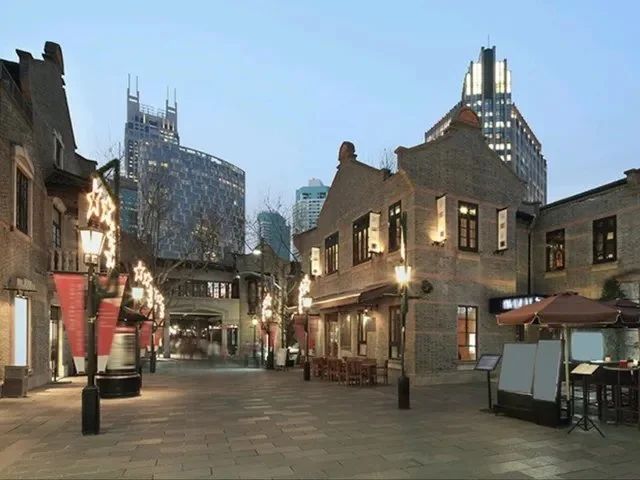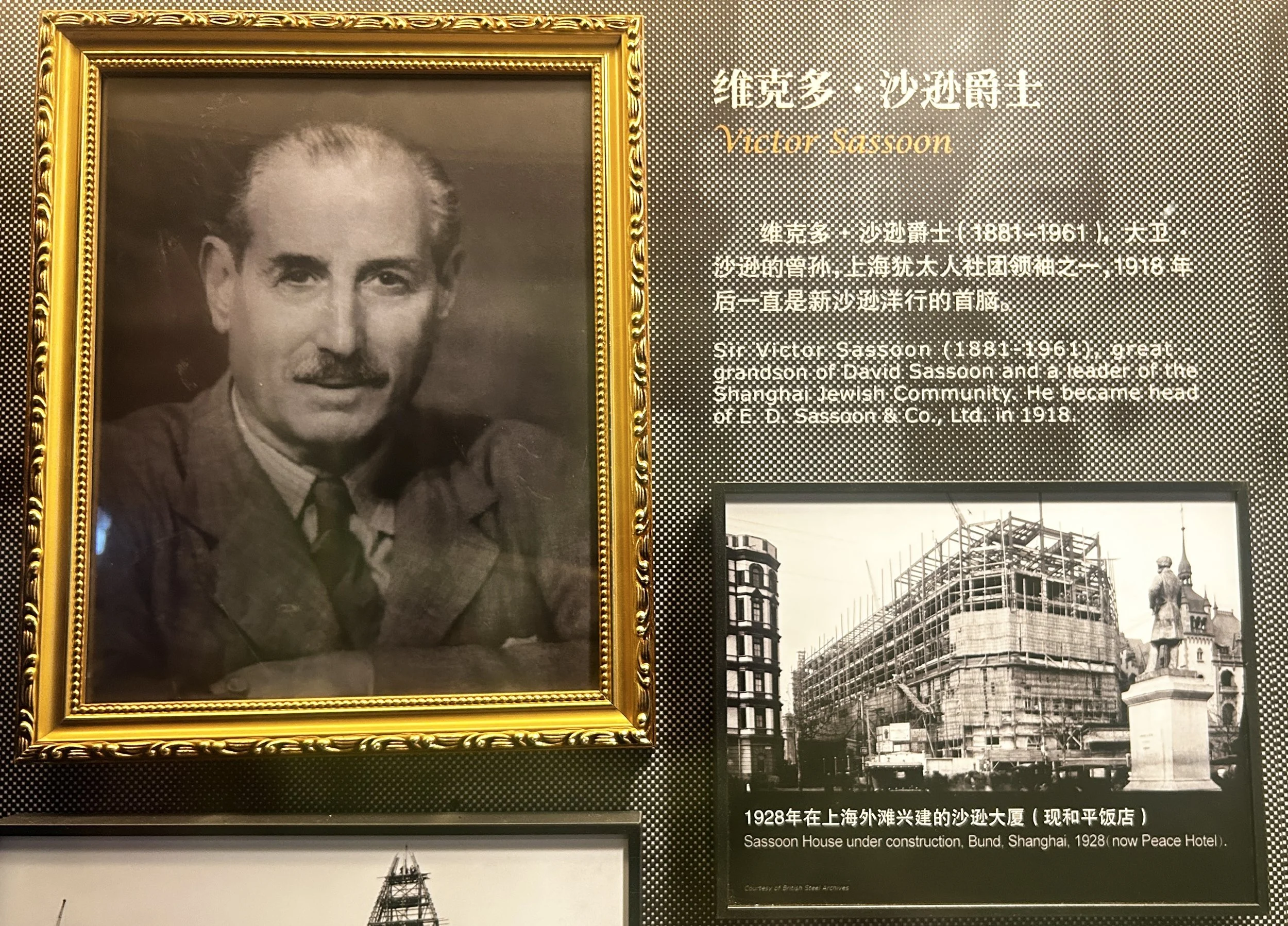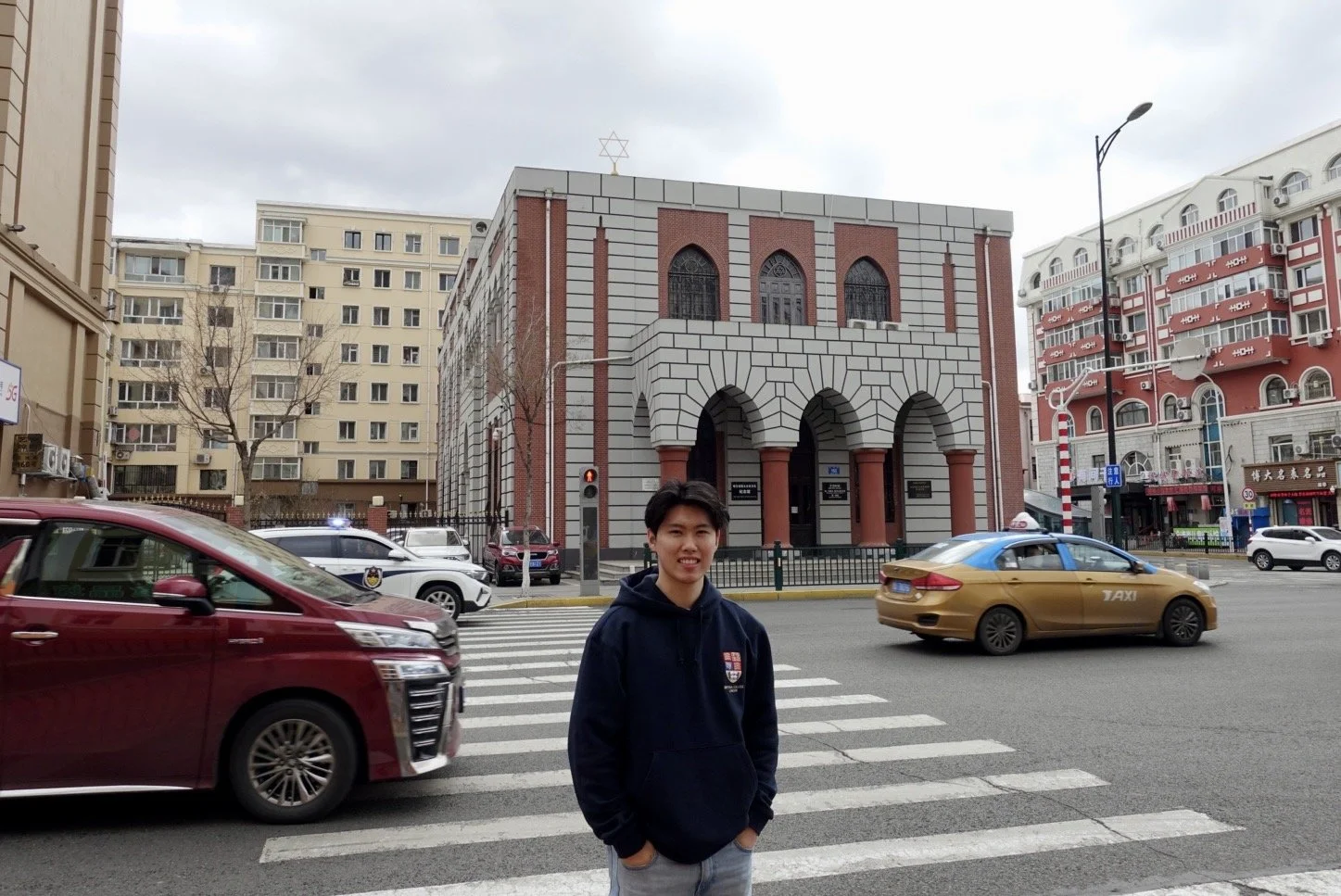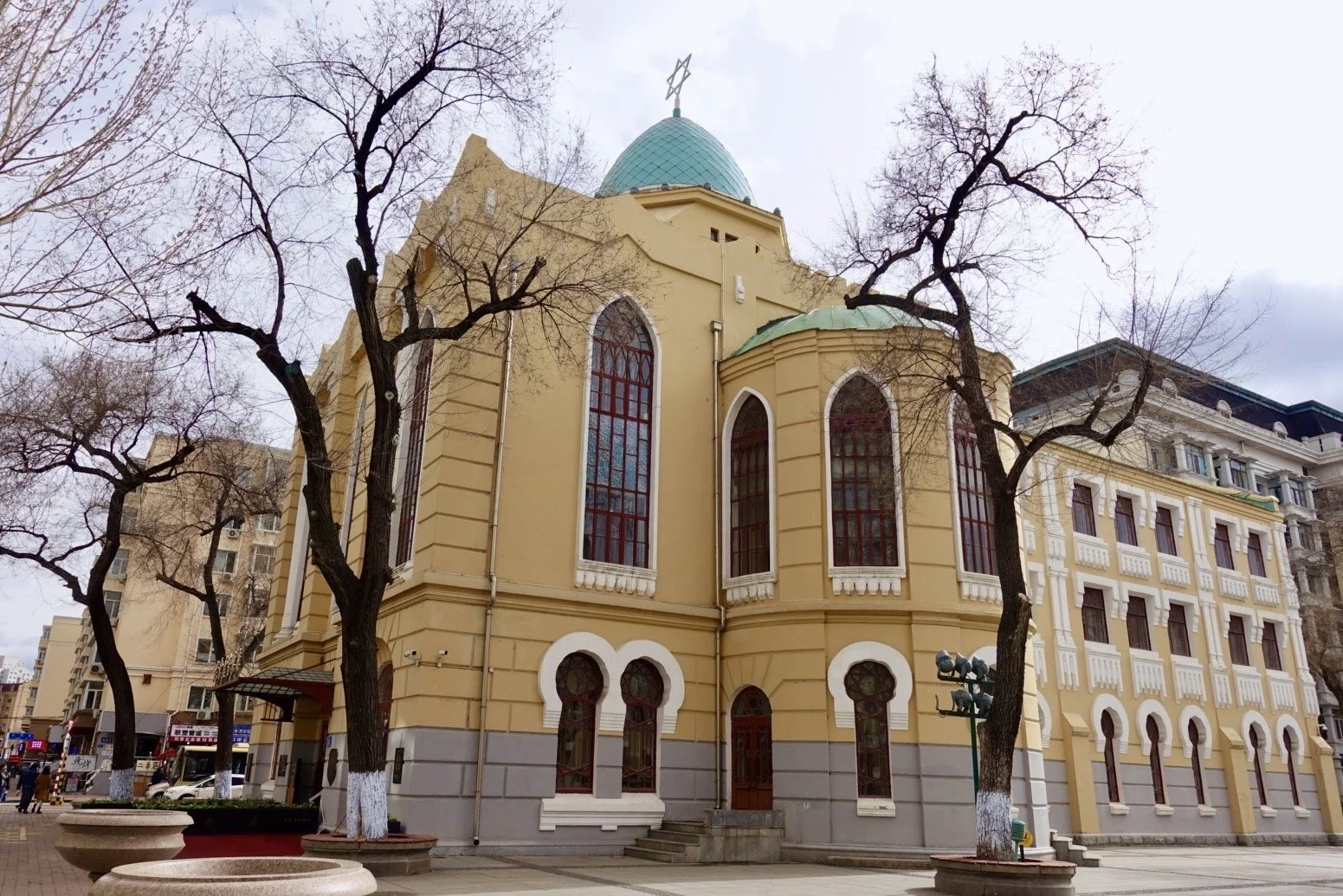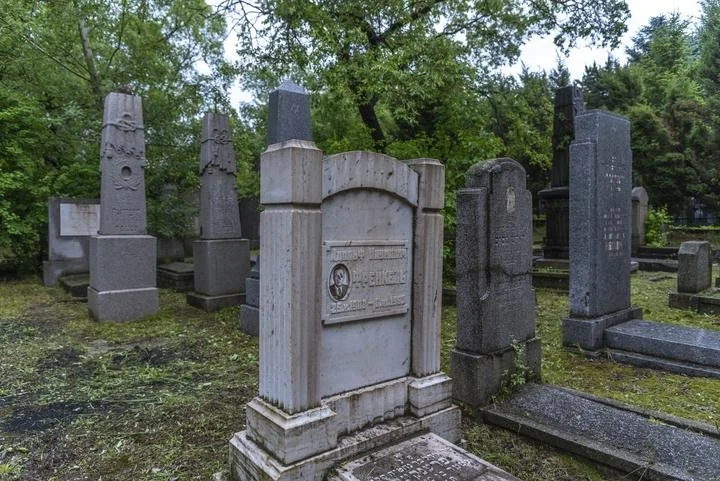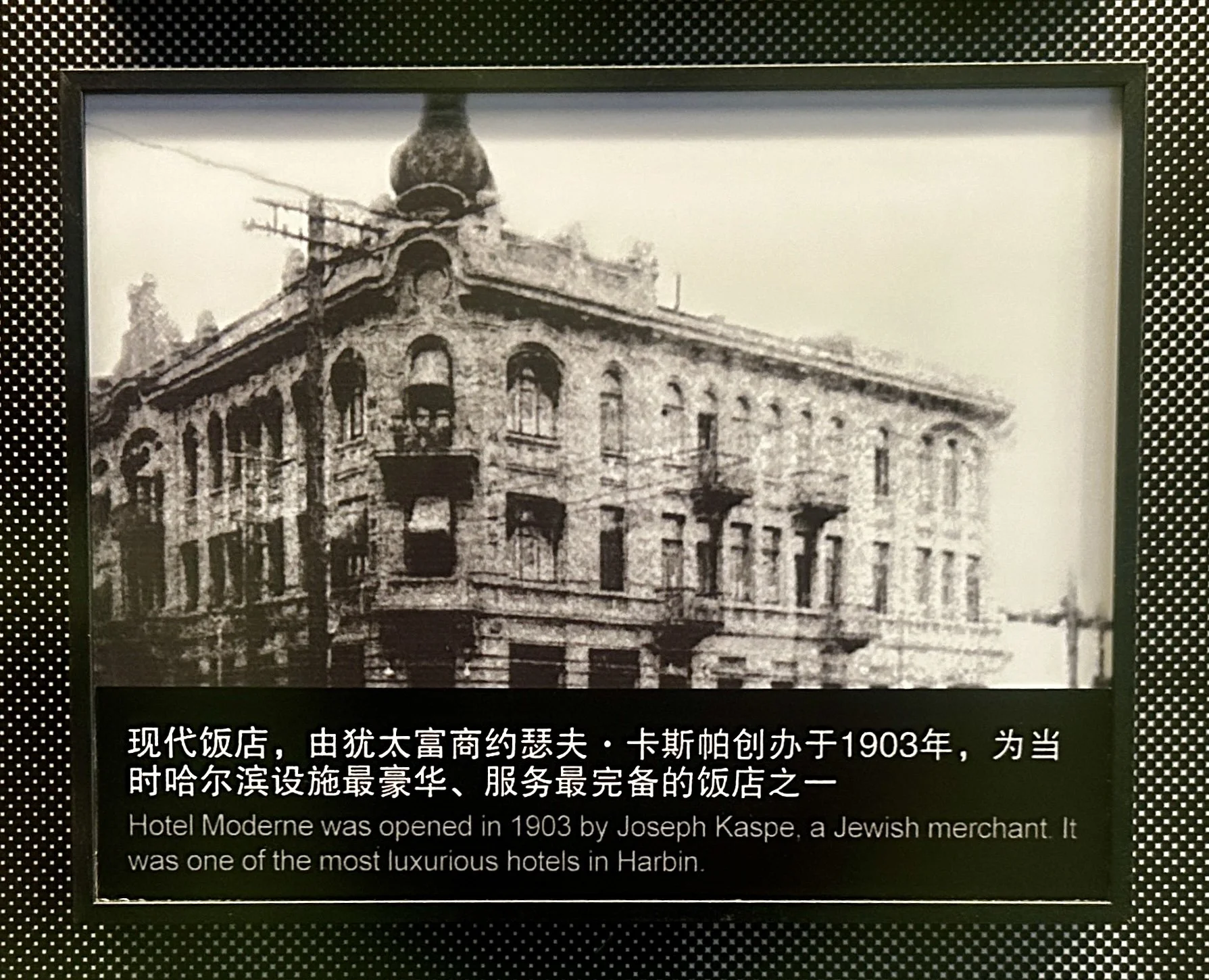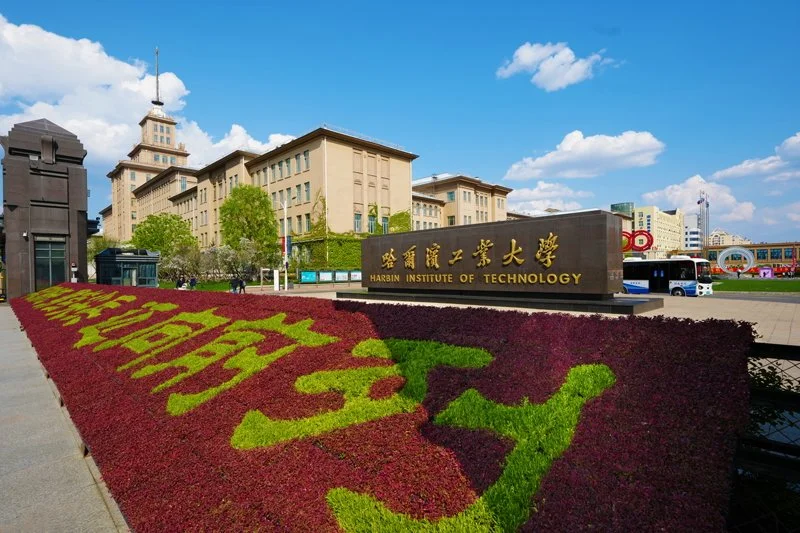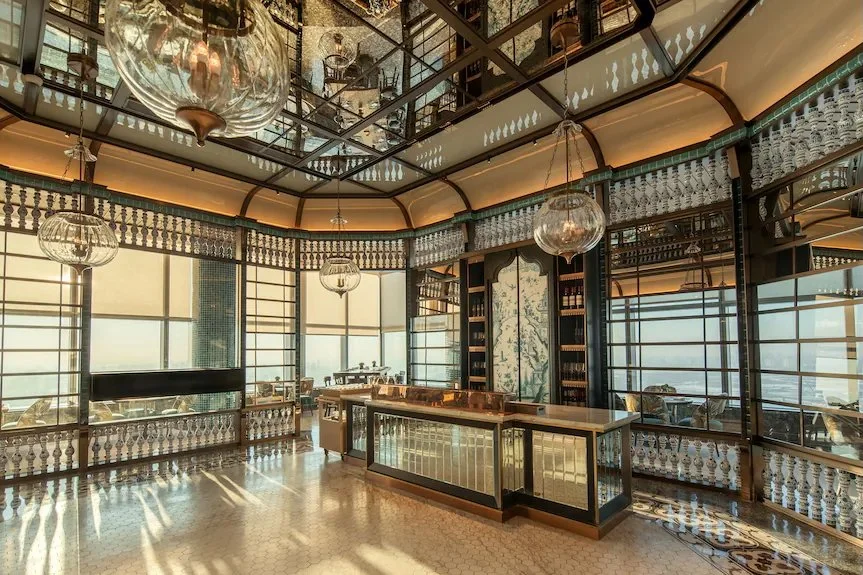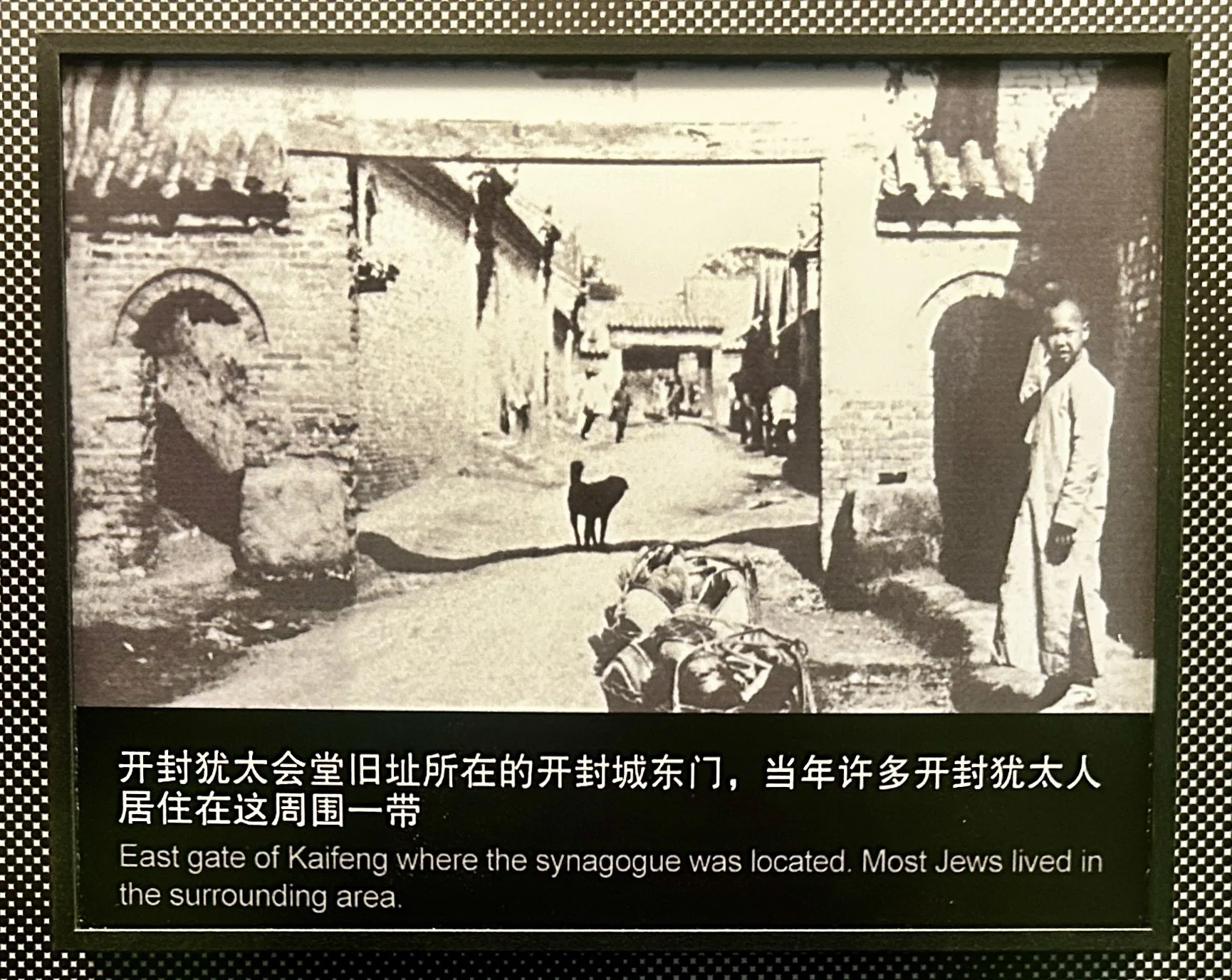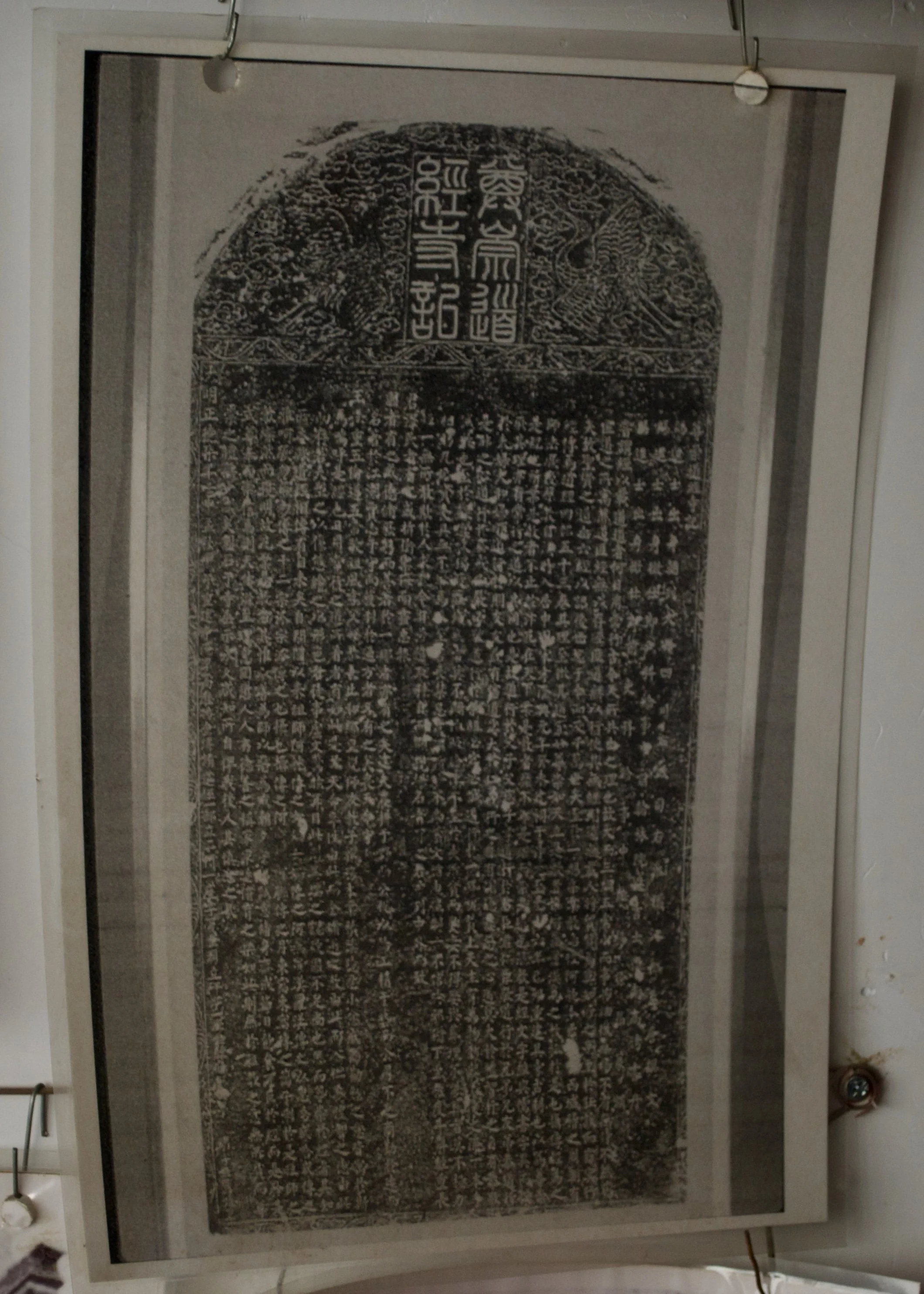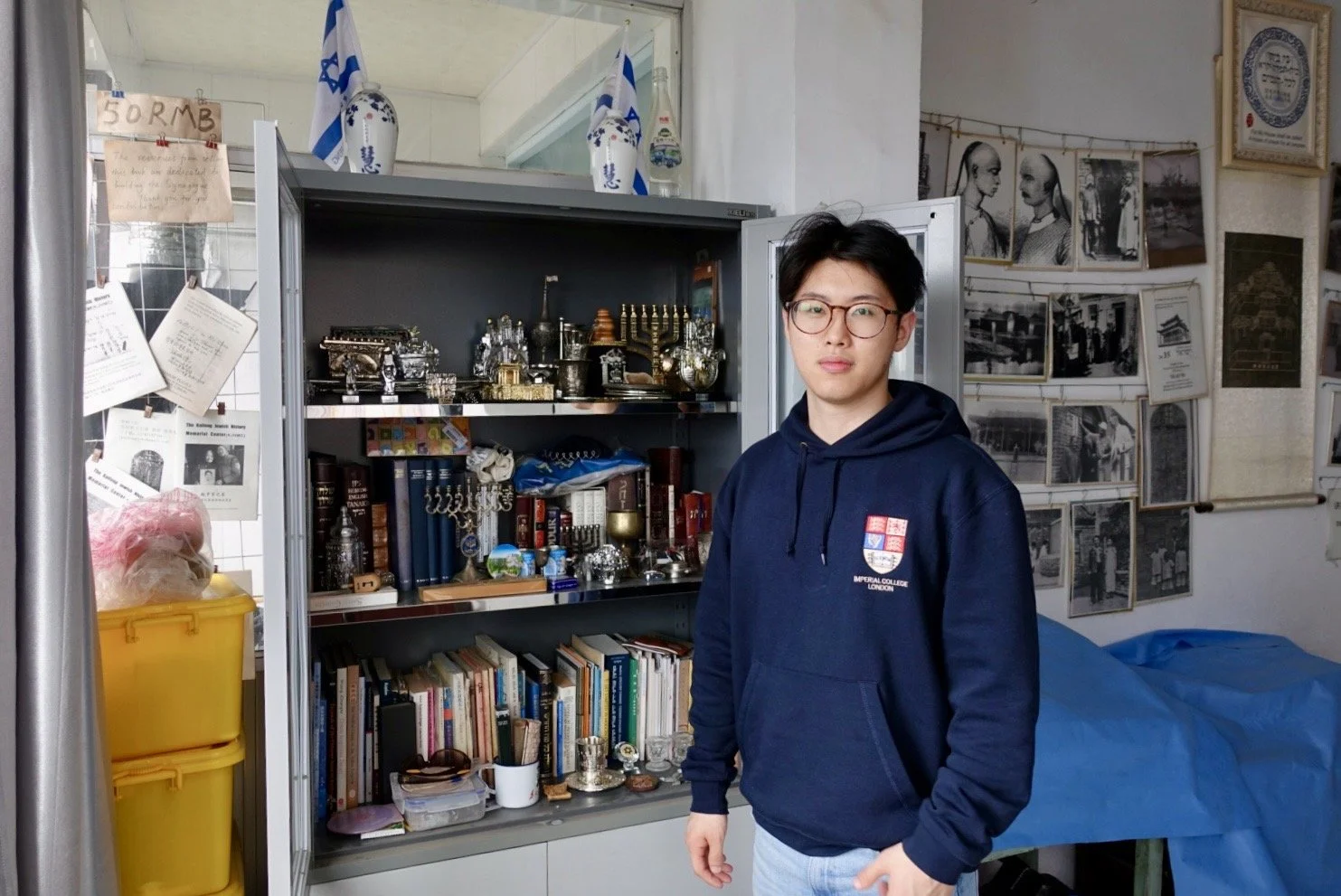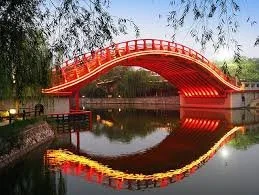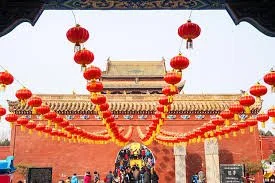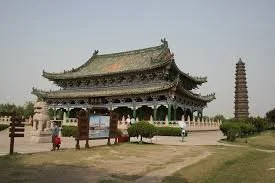Jewish Heritage Tour in China
Shanghai → Harbin → Kaifeng → Shanghai
Time: October, 14 Days
📌 Shanghai (3 Days) - where Baghdadis Built Empires and Refugees Found Hope
When the world turned its back, Shanghai stood as the final lifeline for 20,000 Jewish refugees fleeing Nazi terror—the only city demanding no visas, no papers, just hope. In the labyrinthine lanes of the Tilanqiao Ghetto, their story of survival still echoes through the hallowed halls of the Ohel Moshe Synagogue. Yet, equally profound is the legacy of Baghdadi Jewish dynasties like the Sassoons and Kadoories. Their pioneering spirit didn't just shape Shanghai's iconic skyline; it forged its economic prowess, with their architectural marvels, from the majestic Peace Hotel to the stately Ohel Rachel Synagogue, standing as enduring testaments. Here, two distinct Jewish narratives intertwine: one of exiles finding solace and hope in despair, the other of audacious pioneers shaping an empire. Walk where tears stained cobblestones. Touch walls that birthed empires. This is where broken wings found shelter, and where visionaries taught a city to soar.
✅ Ohel Moshe Synagogue (摩西会堂)
[Zane Archives]
Nestled in Shanghai’s Tilanqiao District (提篮桥区), the Ohel Moshe Synagogue, now Shanghai Jewish Refugees Museum (上海犹太难民纪念馆), sheltered over 20,000 Jewish refugees escaping the Holocaust. Now a museum, its powerful exhibits—fading photographs, oral histories, personal artifacts—reveal daily life in the Jewish quarter. Displays chronicle everything from struggles to find work and form new families, to lasting bonds with Chinese neighbors. The centerpiece Wall of Names honors over 18,000 refugees, preserving their legacies. To fully appreciate this profound story of survival and solidarity, a private tour with senior museum staff will be arranged.
✅ Shanghai Jewish Ghetto (上海犹太难民隔离区)
[Zane Archives]
The Tilanqiao district, once designated by Japanese authorities as the “Restricted Sector for Stateless Refugees,” became an unlikely haven for over 20,000 Jewish refugees during World War II. Within this confined area, families endured severe overcrowding and rationed resources, yet forged a vibrant community life. A guided walk reveals poignant remnants of that era: the Ohel Moshe Synagogue, a spiritual and communal center; the White Horse Café, a gathering place for refugees; and commemorative plaques marking sites of historical significance. Despite hardship and global indifference, the Shanghai Jewish Ghetto stands today as a symbol of sanctuary and resilience.
✅ Former Residence of Michael Blumenthal (布卢门撒尔旧居)
[Zane Archives]
Michael Blumenthal is among the most distinguished Jews to have found refuge in Shanghai. In 1938, he fled the Holocaust with his family and attended the Jewish school in Shanghai from 1939 to 1942. In 1943, the Japanese, who occupied Shanghai at the time, forced the Jewish refugees into a ghetto for stateless refugees. Michael and his family moved there too and lived in an attic room at 39 Zhoushan Road. In 1947, he moved to the USA. In 1977, he became Secretary of the Treasury under the Carter administration.
✅ Former Site of American Jewish Joint Distribution Committee (美犹联合救济委员会旧址)
[Zane Archives]
Established in 1914 as a global Jewish humanitarian organization, the American Jewish Joint Distribution Committee (JDC) began relief efforts in Shanghai in 1938 and opened a local office in 1941. The JDC provided essential aid—including food, shelter, clothing, medical care, childcare, and vocational training—to about 15,000 Jewish refugees. After the attack on Pearl Harbor, contact with the JDC’s New York headquarters was severed, but aid workers such as Laura Margolis and Manny Siegel continued their efforts. After the war, the JDC helped refugees emigrate to regions such as the British Mandate for Palestine and the United States.
✅ Memorial Plaque in Huoshan Park (霍山公园纪念牌)
[Zane Archives]
Erected in 1993 to commemorate Israeli Prime Minister Yitzhak Rabin's visit, this trilingual plaque (Mandarin, English, Hebrew) at Huoshan Park serves as a poignant reminder of its role as a communal "living room" for Jewish refugees. It notes that from 1937 to 1941, thousands of Jews found shelter in Shanghai from Nazi persecution. During the Japanese occupation, they were classified as "stateless refugees" and restricted to this designated area for residence and business.
✅ Ohel Rachel Synagogue (拉結會堂)
[Zane Archives]
Built in 1920 by Sir Jacob Elias Sassoon in memory of his wife Rachel, Ohel Rachel Synagogue is a striking Neoclassical landmark in Shanghai’s former French Concession. Once the largest synagogue in the Far East, its sanctuary held up to 700 worshippers and stands as a testament to the prosperity and enduring legacy of Shanghai’s Baghdadi Jewish community. Though no longer open for regular services, Ohel Rachel remains a vital window into pre-war Jewish life in Shanghai. Our tours will aim to arrange a special viewing of this remarkable site.
✅ Shanghai Jewish Center (上海犹太中心)
Founded in 1998 by Rabbi Shalom and Dina Greenberg, the Shanghai Jewish Center stands at the heart of the city’s modern Jewish community. It houses a synagogue, kosher restaurant, Hebrew school, preschool, mikvah, and event spaces, supporting religious services, education, and social life for both residents and visitors. Our tour will aim to arrange a Shabbat dinner at the Center, as well as discussion with senior members of the Center about contemporary Jewish life in Shanghai.
✅ Shanghai Jewish Hospital (上海犹太医院)
Designed in 1931 by Russian-Jewish architect Lev Goldenstaedt, this Modernist building was established with support from the Jewish community and the Shanghai Jewish Relief Association, including significant contributions from Sir Elly Kadoorie. During World War II, it became the main free medical center for refugees in the Tilanqiao Ghetto. Today, it is home to Fudan University’s Eye & ENT Hospital (复旦大学附属眼耳鼻喉科医院).
✅ Shanghai Children's Palace (上海少年宫)
[Zane Archives]
Located at 64 Yan’an West Road (延安西路64号) in Jing’an District (静安区), the Marble Hall was built between 1918 and 1924 by Sir Elly Kadoorie, a prominent Baghdadi Jewish philanthropist. Blending British colonial and Italian Renaissance styles, its Carrara marble interiors once hosted lavish Jewish community events. After the Kadoorie family left Shanghai in 1949, the mansion became the China Welfare Institute Children’s Palace (中国福利会少年宫) in 1953.
✅ Surprise Guest Speaker
Our surprise guest speaker, a leading expert on the history of Jews in China, will offer a compelling account of Shanghai’s remarkable role as a haven for Jewish communities from around the world. The presentation will trace the journeys of Sephardic merchants, Russian émigrés, and European refugees from the mid-1800s through World War II, highlighting how these groups established vibrant neighborhoods, synagogues, and schools. The speaker will explore the challenges faced, the cultural exchanges with Shanghai’s Chinese residents, and the complexities of building new lives in unfamiliar surroundings. This talk will leave you with a lasting sense of how resilience and belonging can flourish in the most unexpected places.
📌 Shanghai City Tour (2 Days)
Shanghai mesmerizes with its seamless display of past and future, where the Bund’s Neoclassical and Art Deco facades face the engineered skyline of Pudong. The city pulses with invigorating yet refined energy, as tree-lined boulevards connect tranquil neighborhoods with vibrant shopping malls and contemporary boutiques. The Huangpu River mirrors this duality, dividing historic charm from avant-garde ambition in a breathtaking panorama. More than a destination, Shanghai draws visitors into its rhythm, promising moments of connection and memories that linger long after departure.
✅ The Bund (外滩) & Nanjing Road Pedestrian Street (南京路步行街)
[Zane Archives]
Stroll along the Bund, Shanghai’s most iconic waterfront promenade, where grand colonial-era banks and trading house stand as enduring symbols of the city's cosmopolitan past. Take in breathtaking views of Pudong’s skyline across the Huangpu River, highlighted by the spiraling Shanghai Tower (China’s tallest), the striking “Bottle Opener” of the World Financial Center, and the iconic Oriental Pearl TV Tower with its distinctive pink sphere. Just a short walk away, Nanjing Road East dazzles with neon-lit facades, luxury boutiques, and bustling crowds. Together, these landmarks perfectly encapsulate Shanghai’s dramatic evolution from colonial trading port to global metropolis.
✅ Yu Garden (豫园) & Old City God Temple (城隍庙)
Discover Yu Garden, a stunning 16th-century masterpiece of classical Chinese landscape design where elegant pavilions, intricate rockeries, winding corridors, and tranquil koi ponds reflect the refined artistry of the Ming Dynasty. Just steps away, the vibrant Yu Garden Bazaar brims with traditional architecture, specialty shops, and enticing aroma of local street food. Nearby, the Old City God Temple, one of Shanghai’s most revered Taoist temples, stands as a bustling center for worship and community festivities, nestled within a maze of historic lanes alive with teahouses and snack stalls. Here, in the heart of old Shanghai, centuries of culture and tradition come alive.
✅ Lujiazui Financial District
Across the Huangpu River from the Bund, Lujiazui is Shanghai’s dazzling financial district, defined by its futuristic skyline of soaring glass-and-steel towers. By day, these architectural marvels house global banks and bustling commerce; by night, they transform into a neon-lit wonderland. The elevated pedestrian walkway seamlessly connects major skyscrapers, luxury malls, and metro stations. At its pinnacle, the Shanghai Tower—China’s tallest building— offers a 118th-floor observation deck with breathtaking, 360-degree city views from the world’s highest indoor observation deck. Lujiazui stands as a powerful symbol of Shanghai’s modern ambition and economic ascent.
✅ Huangpu River Cruise
[Zane Archives]
Embark on a 45-minute voyage from Shiliupu Pier (十六铺码头) and witness Shanghai’s breathtaking duality unfold—where the Bund’s colonial-era grandeur faces Lujiazui’s futuristic skyline. This unforgettable cruise distills the city’s essence, capturing the vivid interplay of history and modernity in a single, sweeping panorama.
✅ Former French Concession (上海法租界)
Established in 1849 and once Shanghai’s most prestigious residential area, this historic district features boulevards of French parasol trees (法国梧桐), elegant European villas, and Art Deco mansions, echoing the city’s colonial past. Along Wukang Road (武康路) and Fuxing Road (复兴路), architectural splendor mingles with the aroma of fresh coffee and charming independent boutiques. The labyrinthine alleys of Tianzifang (田子坊) pulse with creative energy from vibrant studios and eclectic shops. Rising above the urban rhythm, Xujiahui Cathedral (徐家汇天主堂) stands as a majestic neo-Gothic sanctuary. This is a romantic, walkable enclave at the heart of Shanghai’s cosmopolitan spirit.
✅ Zhujiajiao Water Town (朱家角古镇)
Zhujiajiao, the “Venice of Shanghai,” is a beautifully preserved ancient water town with over 1,700 years of history. Tranquil canals, shaded by graceful willow trees, wind through its heart, crossed by 36 elegant stone bridges—including the Release-Life Bridge (放生桥), where Buddhists once freed animals in acts of compassion and hope for good karma. Along narrow, winding lanes, thousands of Ming and Qing dynasty buildings line the waterways, their whitewashed walls and black-tiled roofs icons of tradition. Wooden houses, bustling markets, serene courtyards, and drifting boats together conjure a world of timeless charm and gentle beauty.
✅ Xintiandi (新天地)
Xintiandi, meaning “New Heaven and Earth,” is a vibrant pedestrian district in central Shanghai that seamlessly blends historic charm with modern energy. Located in the former French Concession, it features beautifully restored Shikumen (石库门) houses, now home to upscale boutiques, galleries, cafes, and restaurants along picturesque cobblestone streets. By preserving traditional facades while modernizing interiors, Xintiandi offers a sophisticated fusion of old Shanghai and cosmopolitan style—making it a premier destination for dining, shopping, and nightlife.
🏠 HOTEL:
Fairmont Peace Hotel (费尔蒙和平饭店)
[Zane Archives]
Opened in 1929 as Sir Victor Sassoon's Cathay Hotel, this Art Deco masterpiece was instantly hailed as "The Number One Mansion in the Far East"—a glittering magnet for global elites, from statesmen to silver screen stars. In 1956, it was renamed the Peace Hotel (和平饭店) after weathering war and political upheaval. A special private tour by the hotel senior staff will delve deeply into its storied past, architectural grandeur, and the extraordinary vision and legacy of the Sassoons.
✅ Must try food
[Zane Archives]
Shanghai cuisine, known as Hu cuisine (沪菜), weaves subtle sweetness, lustrous reddish-brown hues, and a delicate harmony of flavors into every dish. The hallmark “浓油赤酱” (rich oil and red sauce) reflects its signature use of soy sauce, sugar, and rice wine, creating dishes with deep color and complexity. Braising, stewing, and gentle stir-frying highlight the freshness of seasonal ingredients, resulting in cuisine that is both visually striking and layered with nuanced taste—an edible expression of Shanghai’s elegance and cosmopolitan character.
§ Doujiang & Youtiao (豆浆油条) – Fresh soy milk, served sweet or savory, paired with crispy fried dough sticks for a classic and comforting Shanghai breakfast.
§ Cong You Bing (葱油饼) – Flaky scallion pancakes pan-fried until golden, with layers of green onion and a savory, aromatic bite.
§ Ma Lan Tou with Spiced Tofu (凉拌马兰头) – Finely chopped ma lan tou greens tossed with five-spice tofu and sesame oil, creating a refreshing and herby salad.
§ Vegetarian Duck (素鸭) – Bean curd sheets layered and braised with mushrooms and bamboo shoots, offering a rich, savory texture reminiscent of duck.
§ Kaofu (烤麸) – Wheat gluten braised with mushrooms, black fungus, peanuts, and soy sauce, resulting in a sweet-savory, spongy dish full of flavor.
§ Scallion Oil Noodles (葱油拌面) – Springy wheat noodles tossed in fragrant scallion oil and soy sauce, delivering a simple yet deeply satisfying taste.
§ Drunken Chicken (醉鸡) – Chicken marinated in Shaoxing wine and spices, served chilled with a floral aroma and tender, juicy texture.
§ Eight Treasure Duck (八宝鸭) – Deboned duck stuffed with barley, nuts, seeds, and mushrooms, then steamed until tender for a festive and flavorful centerpiece.
§ Eight Treasure Rice (八宝饭) – Glutinous rice steamed with dried fruits, nuts, and sweet bean paste, offering a mildly sweet and celebratory dessert.
§ Osmanthus Rice Cake (桂花糕) – Glutinous rice cake infused with osmanthus blossoms, lightly sweetened and sometimes layered with red bean paste for a floral, delicate treat.
📌 Harbin (2 Days) - where Russian Jews Found Haven in the Far East
Harbin was once the largest center of Jewish life in East Asia, with a vibrant community that peaked at over 20,000 in the 1920s. Russian Jews first arrived around 1899, drawn by opportunities created by the Trans-Siberian Railway and seeking refuge from Tsarist persecution. A second wave followed the Bolshevik Revolution in 1917, further enriching the city’s Jewish culture. Harbin became a sanctuary for refugees, a hub for entrepreneurs, and a remarkable crossroads of Jewish and Chinese history—its legacy still visible today in the city’s streets and architecture.
✅ Harbin New Synagogue (哈尔滨犹太新会堂)
[Zane Archives]
Built in 1918 at 162 Jingwei Street (经纬街162号), the New Synagogue—now the Harbin Museum of Jewish History and Culture (哈尔滨犹太历史文化博物馆)—was once the largest in East Asia, seating up to 450 worshippers. After surviving a 1931 fire allegedly set by anti-Communist Russian gangs, it was restored, then close in 1963 and converted into a hospital and hostel. Fully restored in 2004, it now tells the story of Harbin’s Jewish community through exhibits on their struggles, achievements, and cultural legacy. A specially arranged private tour led by senior museum staff will reveal the hidden history and lasting echoes of this vanished community.
✅ Harbin Old Synagogue (哈尔滨犹太老会堂)
[Zane Archives]
Harbin’s Old Synagogue, originally known as the Harbin General Synagogue, (哈尔滨犹太总会堂) completed in 1909 at 82 Tongjiang Street (通江街82号), was the spiritual and communal heart of what was then East Asia’s largest Jewish population, serving as a center for worship, education, and cultural life. After surviving a devastating fire in 1931 and decades of use until 1963, the synagogue was restored by the Harbin municipal government and reopened in 2014 as the Harbin Old Synagogue Concert Hall (哈尔滨老会堂音乐厅).
✅ Harbin Jewish Cemetery (哈尔滨犹太公墓)
Founded in 1903 and consolidated in 1958 into the Huangshan Public Cemetery (皇山公墓), about 10 km east of Harbin, this is the largest and best-preserved Jewish cemetery in the Far East. It contains over 850 restored tombstones, including that of former Israeli Prime Minister Ehud Olmert’s grandfather. Marked by a prominent Magen David and Tahara house, the cemetery honors the legacy of Harbin’s Jewish community of 20,000 Russian Jews.
✅ Former Residence of Jewish Merchant Soskin (犹太商人索斯金故居)
[Zane Archives]
The Soskin Mansion, built in 1910 and now a National Key Cultural Relic, is a rare example of Jewish residential architecture in Harbin. Its blue-grey, single-story structure features elegant classical elements—Corinthian columns, ornate eaves, and white vase-shaped railings—that blend Jewish and European influences. Inside, visitors find refined fuchsia-colored woodwork, flexible living spaces, and period furnishings that evoke the cosmopolitan spirit of Harbin's Jewish elite. The Soskin family, originally from Crimea, settled in Harbin in the early 1900s and became leaders in international trade, grain and oil processing, banking, shipping, and municipal development.
✅ Modern Hotel (马迭尔宾馆)
[Zane Archives]
Established by Russian-Jewish entrepreneur Joseph Kaspe and opened in 1914, this Art Nouveau masterpiece on Harbin’s Central Street was the vibrant social center for the city’s Jewish elite during the 1920s and 1930s. Renowned for its elegance and cultural significance, it hosted diplomats, artists, and intellectuals. Today, it operates as a 4-star historic hotel, preserving its rich heritage and architectural grandeur.
✅ Harbin Jewish Hospital (哈尔滨犹太医院)
Built in 1933 by the Jewish Relief Society at 36 West Wudao Street (西五道街36号), this modest European-style hospital, led by Dr. Avraham Kaufman, offered both free and paid medical care to Jewish refugees and local Chinese, treating over 26,000 patients by 1935. Today, the building is occupied by the Harbin Municipal Ophthalmology Hospital (哈尔滨眼科医院).
✅ Central Street (中央大街)
Laid out in 1898 by Russian engineers for the Chinese Eastern Railway, Harbin’s iconic 1.4-kilometer boulevard became a showcase of Russian-Jewish architectural ambition. By the 1920s, Jewish entrepreneurs like Joseph Kaspe transformed it into a vibrant display of Eclectic European splendor. Today, it is a bustling pedestrian boulevard whispering tales of a diaspora that helped shape the very fabric of this city.
✅ Harbin Institute of Technology (哈尔滨工业大学)
Founded in 1920 as the Harbin Sino-Russian School for Industry (哈尔滨中俄工业学校), the Harbin Institute of Technology (HIT) became an intellectual crossroads, where Russian and European Jewish engineers and mathematicians played a pivotal role in shaping its early curriculum and academic culture. Located near the historic Jewish district of Central Street, HIT has grown into a leading global engineering university.
✅ Surprise Guest Speaker
Our surprise guest speaker, a leading authority on Harbin’s Jewish legacy, will offer a rare and moving window into the city’s once-flourishing Jewish community. The speaker will illuminate how Jewish refugees established vibrant neighborhoods, businesses, schools, synagogues, and cultural institutions—each becoming an anchor of identity and hope in a remote land. You’ll hear personal accounts of resilience and adaptation, learn about the restoration of significant heritage sites, and gain insight into the unique relationship between the Jewish and Chinese communities. This talk will deepen your understanding of Harbin’s pivotal place in Jewish diaspora history and leave you with a lasting connection to the enduring legacy woven into the city’s streets.
📌 Harbin City Tour (1/2 Day)
Nestled in China’s northeastern frontier, Harbin is a city where history and resilience intertwine beneath vast skies and crisp winters. Known as the "Ice City (冰城)," Harbin wears its seasons with pride—transformed into a glistening wonderland each winter, yet always offering a welcoming spirit through its grand European-inspired architecture and tree-lined boulevards. Its character shines through harmonious contrasts—elegant yet unpretentious, remote yet welcoming, shaped by history yet never frozen in time.
✅ St. Sophia Cathedral (圣索菲亚教堂)
St. Sophia Orthodox Cathedral, Harbin’s most iconic landmark, is a testament to the city’s Russian heritage. Built of timber in 1907 by the Russian 4th Infantry Division after the Russo-Japanese War and the arrival of the Trans-Siberian Railway, it was intended to uplift the spirits of Russian troops stationed far from home. Rebuilt in brick and expanded between 1923 and 1932, it now features Neo-Byzantine architecture with a soaring green onion dome and a cruciform layout. Its square evokes the grandeur of Moscow’s Red Square. Designated a protected cultural relic in 1996, St. Sophia today houses the Harbin Architectural Art Gallery (哈尔滨建筑艺术馆).
🏠 HOTEL:
Ritz-Carlton (丽思卡尔顿)
Rising above the Songhua River (松花江) in one of Harbin’s tallest towers, the Ritz-Carlton’s striking glass façade evokes the cracking ice of the city’s legendary winters, establishing it as a modern architectural landmark. Inside, polished marble, chrome, and rich fabrics are paired with curated art and design elements that reflect Harbin’s unique confluence of Chinese and Russian influences—blue-and-white floral motifs inspired by Russian lace crafts, and feature walls depicting the Changbai Mountains (长白山) and Heilongjiang River (黑龙江). The hotel’s design thoughtfully weaves together these cultural threads, creating an atmosphere that honors the city’s diverse heritage.
✅ Must Try Food
[Zane Archives]
Harbin cuisine blends Northeast Chinese flavors with Russian, Manchu, Korean, and Mongolian influences. Known for hearty dishes featuring smoking, stewing, and pickling, it emphasizes bold, salty tastes and generous portions suited for harsh winters. Staples include preserved vegetables like pickled cabbage, local produce such as potatoes and corn, and meats—especially poultry and beef—prepared to deliver warmth and richness. This cuisine reflects the region’s cold climate and multicultural heritage.
§ Stewed Chicken with Mushrooms (小鸡炖蘑菇) – Chicken and mushrooms slow-cooked in a savory broth for a hearty, warming stew.
§ Iron Pot Stew (铁锅炖) – Chicken, potatoes, and vegetables simmered together in a heavy iron pot for deep, layered flavors.
§ Di San Xian (地三鲜) – Stir-fried potatoes, eggplant, and green peppers, highlighting the natural sweetness and soft texture of the vegetables.
§ Cold Noodles (冷面) – Chewy wheat noodles served cold with a tangy, slightly spicy dressing, often topped with cucumber and egg.
§ Russian Bread (大列巴) – A large, dense sourdough loaf of Russian origin, often enjoyed with butter or jam as a hearty accompaniment.
§ Madie’er Ice Cream (马迭尔冰棍) – Century-old vanilla-flavored ice cream bars, creamy and sweet, named after Modern Hotel where it originated.
§ Harbin Beer (哈尔滨啤酒) – China’s oldest beer, known for its light, crisp taste and refreshing finish.
📌 Kaifeng (2 Days) – where China's Jewish Past Still Whispers
Kaifeng is the cradle of China’s oldest Jewish community, with roots tracing back over a thousand years—likely to Persian Jewish merchants who settled during the Song Dynasty (宋朝, 960–1279). With imperial support, Kaifeng's Jews built their grand synagogue in 1163 and became deeply woven into the fabric of Chinese society while steadfastly preserving their faith. Here, Jewish and Chinese cultures profoundly intertwined: community members adopted Chinese surnames, excelled as Mandarin scholars, and upheld kosher practices so distinct they were known as “The Sect that Plucks out the Sinews.” At its peak, the community numbering around 5,000. Kaifeng offers a rare and poignant glimpse into a uniquely Chinese Jewish identity—one forged by endurance, adaptation, and quiet resilience.
✅ Site of the Kaifeng Synagogue (旧开封犹太教堂遗址)
[Zane Archives]
The Kaifeng Synagogue, first built in 1163 during the Jin dynasty (金朝, 1115–1234), stood at the heart of downtown Kaifeng, bordered by North Teaching Torah Lanes (北教经胡同) and South Teaching Torah Lanes (南教经胡同). Its architecture combined traditional Chinese exteriors with an idol-free interior, reflecting both local style and Jewish religious requirements. The synagogue was destroyed and rebuilt multiple times due to floods and fires, its major restorations commemorated by four steles - dated 1489, 1512, 1663, and 1679. Although the original structure is gone, the site remains a powerful symbol of China’s oldest Jewish community and their enduring legacy.
✅ Jewish Residential Lanes (犹太居民胡同)
[Zane Archives]
North Teaching Torah Lane (北教经胡同) and South Teaching Torah Lane (南教经胡同) were two narrow streets adjacent to the historic Kaifeng synagogue. Their proximity allowed observant Jews to walk to services on the Sabbath and holidays. At its peak between the 14th and 17th centuries, the community numbered 3,000–5,000 people, with these lanes forming the center of Jewish life. Although most descendants have assimilated or dispersed, the survival of the lane's historical names—referencing the teaching of sacred scripture—stands as a lasting reminder of Kaifeng's Jewish heritage.
✅ Kaifeng Museum (开封博物馆)
[Zane Archives]
The Kaifeng Jewish community carved four stone steles in 1489, 1512, 1663, and 1679 to commemorate their history, religious practices, and the rebuilding of their synagogue. The steles record the synagogue’s establishment in 1163 and trace the community’s origins to ancestors who arrived in China from the Western Regions, likely Central Asia or Persia. They describe Adam as the first ancestor of humanity; some scholars note a parallel with the Chinese mythological figure Pangu (盘古), reflecting the community’s efforts to harmonize Jewish heritage with Chinese culture. Today, three of the four steles reside in the Kaifeng Museum, their surfaces weathered but inscription preserved through displayed rubbings.
✅ Meet Kaifeng Jewish Descendant
A direct descendant of Kaifeng’s historic Jewish community will welcome our tour group with firsthand stories, family history, and cultural insights. The descendant will share the community’s traditions, experiences with assimilation, and efforts to preserve Jewish identity in China. Visitors will learn how Kaifeng Jews have maintained practices such as Torah reading, Sabbath observance, and holiday rituals while adapting to Chinese norms. Connecting with a living descendant of this community provides an unforgettable, personal link to Kaifeng’s Jewish heritage, bringing distant history to life as a vibrant, enduring legacy of resilience and identity.
✅ Private Jewish Museum
[Zane Archives]
A descendant will welcome our group to a private museum in one of the last remaining Jewish homes on South Teaching Torah Lane (南教经胡同). The highlight is a wooden model of the historic Kaifeng Synagogue, based on sketches made in 1722 by Jesuit Father Jean Domenge, capturing its traditional Chinese rooflines, courtyards, and unique blend of Jewish and local architecture. The museum also displays rare Qing dynasty photographs of the family’s ancestors, significant memorabilia, and a handwritten Torah in Chinese, enclosed in a wooden ark behind a velvet red curtain. These artifacts offer a powerful window into the daily life and faith of Kaifeng’s Jews.
✅ Surprise Guest Speaker
Our surprise guest speaker, a distinguished scholar of Judaic studies and Chinese history, will offer an illuminating perspective on the Kaifeng Jews—China’s oldest Jewish community. Tracing their journey from Silk Road origins through their flourishing under the Song and Ming dynasties, the speaker will reveal how Jewish traditions intertwined with Chinese culture across the centuries. You will gain insight into the daily life, religious practices, and enduring legacy of the Kaifeng Jews, from the building of synagogue and adoption of Chinese surnames to the ongoing challenges of maintaining Jewish identity in an ever-changing world. This presentation promises to deepen your appreciation for this extraordinary chapter of Jewish history.
📌 Kaifeng City Tour (1 Days)
Nestled along the ancient pathways of the Yellow River, Kaifeng whispers tales of a glorious past, where history lingers in the quiet hum of its streets and the timeless grace of its traditions. The city carries the quiet dignity of a place that has witnessed centuries rise and fall, yet still breathes with enduring grace. Its streets unfold like a scroll—layered with memory, softened by time, and alive with the rhythm of daily life. There is a gentleness to its pace, a warmth in its people, and a sense of continuity that drifts through the air.
✅ Millennium City Park (清明上河园)
Millennium City Park, a historical and cultural theme park, recreates the life of the Northern Song Dynasty (北宋, 960–1127), inspired by Zhang Zeduan’s (张择端) renowned scroll “Along the River During the Qingming Festival” (清明上河图). Showcasing over 400 Song-style buildings, the park features full-scale replicas of Kaifeng’s city gates, rainbow bridges, and imperial gardens. More than 1,000 costumed performers fill the streets with skits, reenactments of court life and folk weddings, as well as ancient games, mock imperial exams, and local delicacies, vividly bringing ancient Bianjing (汴梁) to life.
✅ Dragon Pavilion Park (龙亭公园)
Dragon Pavilion Park is Kaifeng’s most iconic historical site, built on the ruins of the Northern Song (北宋) imperial palace. Its centerpiece, the Dragon Pavilion, is a Qing Dynasty (清朝) hall atop a blue-brick terrace, reached by 72 stone steps—a number symbolizing completeness in Chinese tradition. The pavilion overlooks Yangjia Lake (杨家湖) and Panjia Lake (潘家湖), with their clear and muddy waters representing loyalty and corruption. Exhibits highlight Kaifeng’s “city beneath a city (城摞城),” where layers from the Tang (唐朝), Song (宋朝), Jin (金朝), Yuan (元朝), Ming (明朝), and Qing (清朝) dynasties reveal centuries of rebuilding.
✅ Kaifeng Iron Pagoda (铁塔)
The Iron Pagoda (铁塔) is a masterpiece of Song dynasty architecture and one of China’s most celebrated ancient towers. Built in 1049 during the Northern Song (北宋) to replace a wooden pagoda destroyed by lightning, it stands 56.88 meters tall with thirteen octagonal stories. Despite its name, the pagoda is made from over fifty types of glazed bricks whose iron-gray color inspired its name. The exterior features 1,600 carvings of Buddhas, monks, dancers, flowers, and legendary animals. Inside, a spiral staircase leads to panoramic views of Kaifeng, while 104 bells hang under the eaves, chiming in the wind.
✅ Grand Xiangguo Monastery (大相国寺)
This Monastery, built in 555 during the Northern Qi Dynasty (北齐, 550-577), became Kaifeng’s largest Buddhist temple in the Northern Song Dynasty (北宋), hosting over 1,000 monks and serving as a national center for Buddhism and culture. The complex, rebuilt multiple times due to war and floods, features Qing Dynasty (清朝) architecture, including the main gate, Hall of Heavenly Kings, Mahavira Hall, and the Octagonal Hall, which houses a famous wooden statue of Guanyin with many hands and eyes. Today, it remains a key site for Buddhist worship.
✅ Drum Tower Night Market (鼓楼夜市)
The Drum Tower (鼓楼) is a historic landmark in central Kaifeng, originally built in 1379 during the Ming Dynasty as part of the city's timekeeping system and reconstructed several times since. As evening falls, the area transforms into Kaifeng’s largest and most famous night market. The tradition of night markets in this area dates back to the Song Dynasty, when Kaifeng pioneered evening business and street food culture.
🏠 HOTEL:
Pullman Kaifeng Jianye (开封建业铂尔曼酒店)
The Pullman Kaifeng Jianye harmonizes modern aesthetics with nods to Kaifeng’s imperial heritage. Sleek geometric lines and expansive glass facades create openness, while the low-rise structure and curved, undulating roof draw inspiration from ancient Chinese palaces, blending Song Dynasty elegance with contemporary style. Inside, minimalist design is enriched by traditional artistry: wood accents, earth tones, and symmetry evoke classical Chinese ink paintings. Lantern-inspired lighting and landscape murals enhance the serene ambiance. This blend of past and present creates a luxurious retreat deeply connected to Kaifeng’s heritage and surroundings.
✅ Must Try Food
[Zane Archives]
Kaifeng cuisine, shaped by its legacy as the Northern Song capital, is a beloved branch of Henan cuisine (豫菜) known for its salty, savory (鲜) flavors and colorful presentation. Gentle cooking methods like steaming, braising, and quick-frying with minimal oil highlight the freshness of each ingredient. Wheat-based foods such as noodles and buns are staples, reflecting the region’s agricultural heritage. Kaifeng’s bustling street food scene and lively night markets bring together imperial recipes and local favorites.
§ Carp with Baked Noodles (鲤鱼焙面) – Whole Yellow River carp fried and glazed in a tangy sweet-and-sour sauce, served atop crispy baked noodles that soak up the rich flavors.
§ Four Treasures Wrap (四宝扒鸡) – Deboned duck, chicken, pigeon, and quail layered inside one another and slow-stewed, yielding tender meat and savory juices in every bite.
§ Braised Chicken (桶子鸡) – Whole chicken braised in a fragrant brine until exceptionally tender and aromatic, often served cold or at room temperature for a pure, delicate taste.
§ Fried Bean Jelly (炒凉粉) – Stir-fried cubes of mung bean jelly, crisp on the outside and silky inside, tossed with savory soy sauce and a touch of chili.
§ Peanut Cake (花生糕) – Soft, crumbly cake made from roasted peanuts and sugar, offering a sweet, nutty flavor and melt-in-your-mouth texture.
